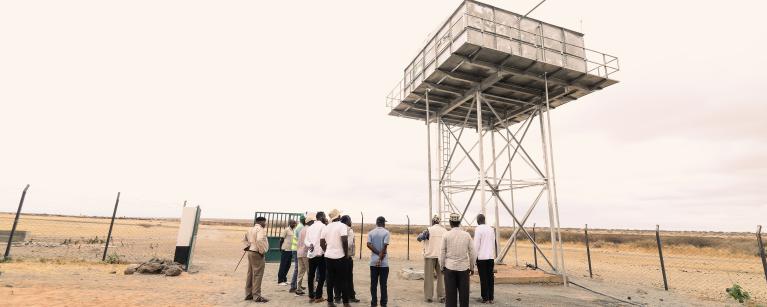Have you ever seen a camel run? Like really run. I'm talking dust lifting kind of running. It’s as shocking as it is a spectacle. They can run, especially if they are hungry and thirsty -albeit moving in the same majestic way they walk. Interesting fact, that hump on their back can store water for up to 21 days.
On this particular day, it was day 21 and they were thirsty. They were running towards the watering point that is within Rawana that serves animals on one side and community members on the other. We are seated with mama Teso as she narrates her journey back to Rawana, after traveling to Ethiopia on foot with her family and goats in search of food, pasture and water. We are distracted by
the camels though, they (the camels) run in one line and get to the watering point. And for the next 3 hours they drink as much water as they possibly can.
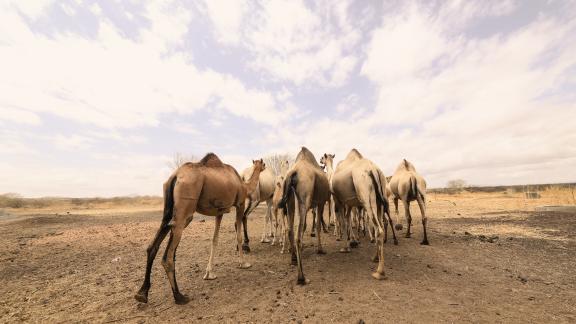
A caravan of camels on its way to the watering trough in Rawana, Marsabit. Photo credits: Mark Wahwai.
“When I had just gotten to Ethiopia, I got word that Strategies for Northern Development (SND) had revived our watering point by solarizing the borehole system and were, at the time, laying a pipe to bring water closer to the community member.”
Oxfam through its partnership with SND, under the ASAL Humanitarian Network (AHN), have solarized the borehole and built a metallic water tank that serves both animals and community members. They have also worked on piping water from the borehole and bringing it closer to the community. This has significantly reduced the distance travelled by women and children as they fetch water in their homes. They have also promoted hygiene practices for community members, securing close to over 5,448 project participants for the WASH/Non Food Items(NFIs) project.
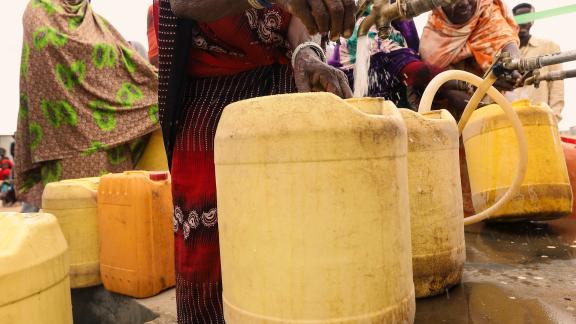
Teso Katelo filling her jerrycans from the communal water tap in Rawana, Marsabit. Photo credits: Mark Wahwai.
“I cannot remember the last time I actually had to walk a long distance in search of water. We would walk for almost 14 kms both ways and now it is as easy as sending our children to fetch water before they leave for school. The fact that our children do not have to spend a whole day away doing chores is a good thing.”
Mama Teso also received health and sanitation training. Since water is now readily available, her family’s health has greatly improved. They also were able to build a toilet, which enabled them to manage and reduce chances of open defecation.
SND also built a community toilet to aid with managing community's sanitation and hygiene conditions. The toilet has a separate bathroom for the community to also take a shower whenever they desire.
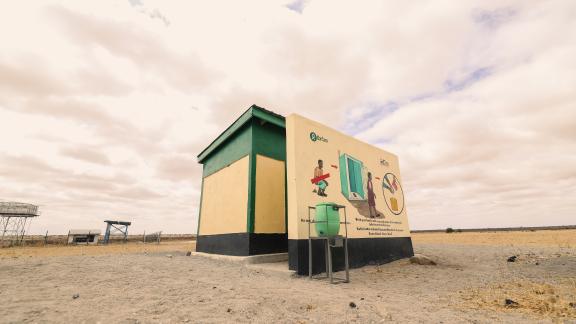
The community toilet in Rawana, Marsabit. Photo credits: Mark Wahwai.
“Through this project, I was able to build a toilet and actually improve how I use and treat my water. This has greatly reduced recurrence of diseases like diarrhoea. We now know that we need to constantly wash our hands after every use, and make sure the water we consume is clean.”
She has to rush and help her daughters secure their Identification cards and she
asks us to end what was now seeming like a very long period of time spent with us. She quickly asks her daughter to prepare her bathing water, which was stored in the 100 litre water tanks that were also provided by SND.
“We used to shower once a week, but now I can shower everyday if I want to. This place is dusty and due to the heat, our bodies need water. We now use clean toilets and drink clean water. In all my years in this region, I have never seen such great improvement and growth.”
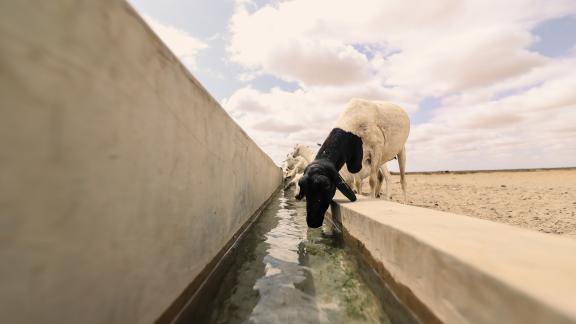
Sheep drinking from the communal water trough in Rawana, Marsabit. Photo by Mark Wahwai.
Story by Oxfam communications.
